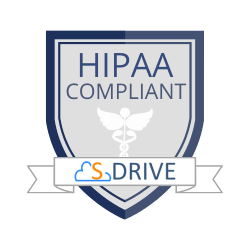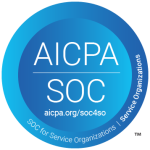Every academic year, universities handle an overwhelming number of files, such as applications, transcripts, recommendation letters, financial aid forms, and compliance documents. Managing them well can mean a smooth enrollment season or a backlog that frustrates both students and staff. Challenges inside Salesforce often begin when users store files across disconnected systems or share them manually by email.
Universities need a solution that keeps all documents centralized, secure, and accessible within their existing Salesforce workflows. With a native document management system, teams have one place to store records. This improves teamwork, speeds up decisions, and protects sensitive student data.
Admissions Workflows Without the Chaos
Admissions teams juggle constant inflows of student applications, each carrying dozens of supporting files. Without a centralized system, staff spend hours searching for the right transcript or recommendation letter. Disorganization leads to slower evaluations and incomplete records that stall the admission process.
Salesforce provides a unified hub for applicant data, but documents often remain outside the system. When admissions teams add document management to Salesforce, they can connect each file to the right student record. Staff can review applications faster, route them for internal approvals, and ensure each requirement is complete before moving forward.
Instead of dealing with scattered attachments, universities benefit from built-in file visibility. With a clear folder structure and version control, teams stay organized. They can finally be sure that every file matches the right applicant’s record.
Financial Aid Processes Simplified
Financial aid requires precision and compliance. Missing tax forms or unsigned verification documents delay funding decisions that impact student enrollment. Manual uploads through email or third-party portals slow the process even further.
By managing documents natively in Salesforce, universities can streamline how students and staff exchange sensitive information. Every uploaded document connects automatically to the student’s financial aid record. Staff can verify forms in real time, track progress, and automate reminders for missing information.
Automated file routing also eliminates repetitive work. For instance, once a student uploads a FAFSA confirmation or income verification document, the system can automatically notify the assigned counselor to review and approve it. This reduces backlogs and improves response time for students waiting on financial aid determinations.
Compliance: The Foundation of Trust
Compliance requirements add another layer of complexity. Universities must protect sensitive student information under FERPA and other data privacy regulations. Storing files on external drives or unsecured cloud folders exposes institutions to unnecessary risk.
When document management is fully native to Salesforce, compliance becomes easier to enforce. Administrators can control who accesses each file, track every interaction, and maintain clear audit trails. These built-in controls help universities demonstrate compliance during audits and reduce the chance of data breaches.
Moreover, storing files within Salesforce ensures alignment between operational processes and data governance standards. Policies for keeping, accessing, and deleting student records apply the same way to all records. This gives IT and compliance officers the oversight they need without needing extra systems to monitor.
Collaboration Across Departments
Document challenges often stem from departmental silos. Admissions, financial aid, and registrar offices each handle their own document processes, leading to duplicated work and fragmented records. A unified approach within Salesforce brings these teams together under one system.
When faculty or staff need a student’s information, they can find all related files within Salesforce. This unified access shortens response times, enhances transparency, and supports a better experience for both staff and students.
Integration with tools like Microsoft 365 also improves collaboration. Teams can co-edit or comment on documents directly within Salesforce while keeping all versions secure and synced. This combination of flexibility and control helps universities maintain operational efficiency even as document volumes grow.
Scalability for Large Academic Systems
A single institution may handle hundreds of thousands of files every year. Storing these documents securely while keeping Salesforce performance high requires a scalable approach. Native document management solutions built on cloud storage infrastructure, such as AWS S3, meet that demand.
Scalability ensures universities can expand storage capacity without disrupting existing processes. Whether during peak admission periods or financial aid renewal cycles, performance remains consistent. With metadata-driven file organization, universities can also automate file retention policies, reducing the manual effort required to archive or delete old records.
Scalability is about sustaining operational agility. As enrollment grows and digital transformation continues, institutions need systems that can adapt without rebuilding their document architecture.
Integrating Digital Signatures for Faster Approvals
Digital transformation in higher education has also reached the signature stage. Many academic documents require official approval, such as grant applications, internship agreements, or financial aid acceptance forms. Printing and scanning delays slow down every workflow.
With eSignature tools integrated into Salesforce, universities can collect approvals directly within the same environment where documents live. Once signed, each file automatically attaches to the corresponding record, eliminating version confusion and manual uploads.
This capability supports both internal reviews and student-facing transactions, reducing turnaround times while maintaining authenticity and compliance. The combination of document management and eSignature in Salesforce creates a smoother, more reliable experience across departments.
Real-World Use: Case File Management in Education
A practical example of this transformation appears in how universities manage student and program records. Admissions, financial aid, and academic services often depend on consistent documentation for case reviews, appeals, or policy compliance.
S-Drive helps institutions organize these records seamlessly through Salesforce. The Case File Management and Work Orders shows how a central system helps with transparency and lowers administrative work. Staff can track every file associated with a student or program case, share updates securely, and close loops faster.
S-Drive operates natively within Salesforce, so it supports compliance with institutional data security policies while allowing departments to work in real time. This simplifies collaboration and helps teams spend less time on manual uploads and more time supporting students.
Empowering Universities with Connected Systems
Document challenges in higher education often stem from legacy processes. Paper-based forms, shared drives, and disconnected tools create unnecessary complexity. By unifying document management, universities transform how they operate.
Salesforce becomes a command center for every academic process. Admissions teams process files faster, financial aid decisions become transparent, and compliance audits take less time to prepare. IT gains visibility across every file activity, ensuring institutional integrity.
The long-term advantage lies in flexibility. As technology evolves, a native document management system within Salesforce scales easily, integrates with new tools, and supports the university’s digital future.
S-Drive extends this capability with a proven foundation for storing, sharing, and securing academic files. By combining Salesforce’s power with scalable cloud storage, universities achieve both operational control and long-term sustainability.
Contact us or see our AppExchange page to learn more about what S-Drive can do for you.



